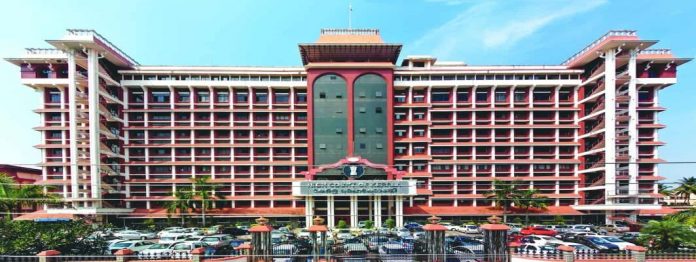The Kerala High Court has directed the Kerala Government to ensure a safe footpath and make its earnest efforts to protect the interest of the public at large and provide them safe roads.
The Division Bench of Chief Justice S. Manikumar and Justice Shaji P. Chaly disposed of a Public Interest Litigation (PIL) filed by one John Daniel seeking the following reliefs: a) issue a writ of mandamus directing the respondents herein to call for a detailed report with regard to the implementation of the guidelines concerning construction of pedestrian path in compliance with the norms stipulated in the Indian Road Congress. b) issue a writ of mandamus directing the respondents herein to strictly implement the guidelines stipulated under the Indian Road Congress with regard to construction of pedestrian paths in all roads across the State. c) issue a writ of mandamus directing the respondent herein to formulate appropriate guidelines, policies or laws to protect the common man’s fundamental right – “The Right to Walk”.
The main grievance highlighted by the petitioner is the absence of footpaths on the major roads in Kerala which has put the lives of the pedestrians in peril. That apart, it is pointed out that the citizens are entitled to enjoy the fundamental rights guaranteed under part III of the Constitution in its letter and spirit and therefore, the State Government and its agencies are duty bound to maintain the roads and footpaths so as to cater to the needs of the general public and the differently-abled persons; and therefore seeks implementation of the Indian Road Congress (IRC) guidelines 2020.
When the matter was taken up for hearing on April 27, a detailed statement is produced before the Court wherein, it is submitted that the footpath and pedestrian facilities are included in the newly constructed designed roads depending on the availability of land width; that most of the roads in Kerala are narrow as they were developed from the existing village roads and therefore, no footpaths were provided in these roads due to non availability of lands. However, it is admitted that accidents have occurred during crossing of the roads by pedestrians and many of them have lost their lives. In so far as with facts and figures of the accidents, it is submitted that there were 1250 deaths in Kerala during 2018. However, it has decreased to 738 in 2020.
It is also admitted that footpath has not been provided on all roads, which is due to the non availability of lands; but paved shoulder, earthen shoulders or foot slabs over drains are provided along the road margins so as to enable the pedestrians to walk safely instead of walking on the carriage way of roads. The accident statistics released from the Ministry of Road Transport and Highways (MoRTH) are also furnished in the statement, which according to us is alarming in nature.
However, it is submitted that due to the action initiated by the State Government, safety precautions are being taken and as far as possible, the IRC : 103 – 2012 Guidelines for Pedestrian Facilities formulated based on the general principles are adopted by the State and carrying out the various construction activities in accordance with the same so as to suit the convenience of the public generally as well as to cater to the needs of the differently abled persons.
Anyhow, the Bench observed that a similar issue was considered by the High Court in W.P. (C)No.24850/2018 in its judgment dated 12th November, 2020 and taking into account the provisions of the Kerala Municipality Act, 1994 various directions were issued, but confining to the Corporation of Cochin and the Public Works Department, Ernakulam district. The Court of the definite opinion that the directions contained thereunder would apply strictly to the instant writ petition also.
That apart the Court noted that the petitioner has produced the Draft Guidelines for Pedestrian Facilities IRC : 103 published during August 2020 wherein the manner in which footpaths are to be designed, pedestrian/walking zone, multi-utility zone, height of footpath, gradient of the footpath, surface of the footpath, continuity of the footpath, planning a cycle track abutting the footpath, shading on pedestrian facilities; tactile pavers, street furniture, railings, street lights, etc. are dealt with.
It is the case of the petitioner that the said Indian Roads Congress Guidelines have to be implemented on the roads in Kerala so as to ensure safety aspects to the pedestrians, differently-abled persons and to the motorists.
“However, in our considered opinion without sufficient land available for widening, and sufficient width for the roads and the footpaths, the State Government cannot be directed to implement the Indian Roads Congress Guidelines as such. We are also of the view that without acquiring land and making the roads and footpaths wide enough, the facilities in terms of the Indian Roads Congress, dealt with above may not be possible to be provided by the State Government,” the order reads.


